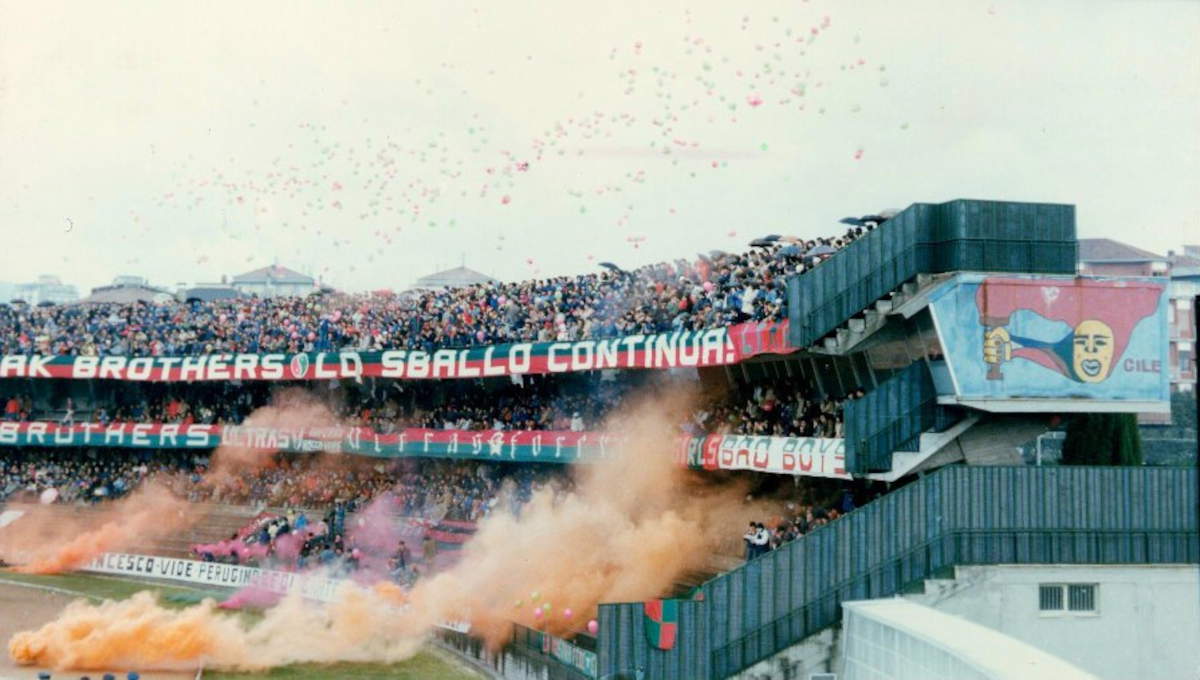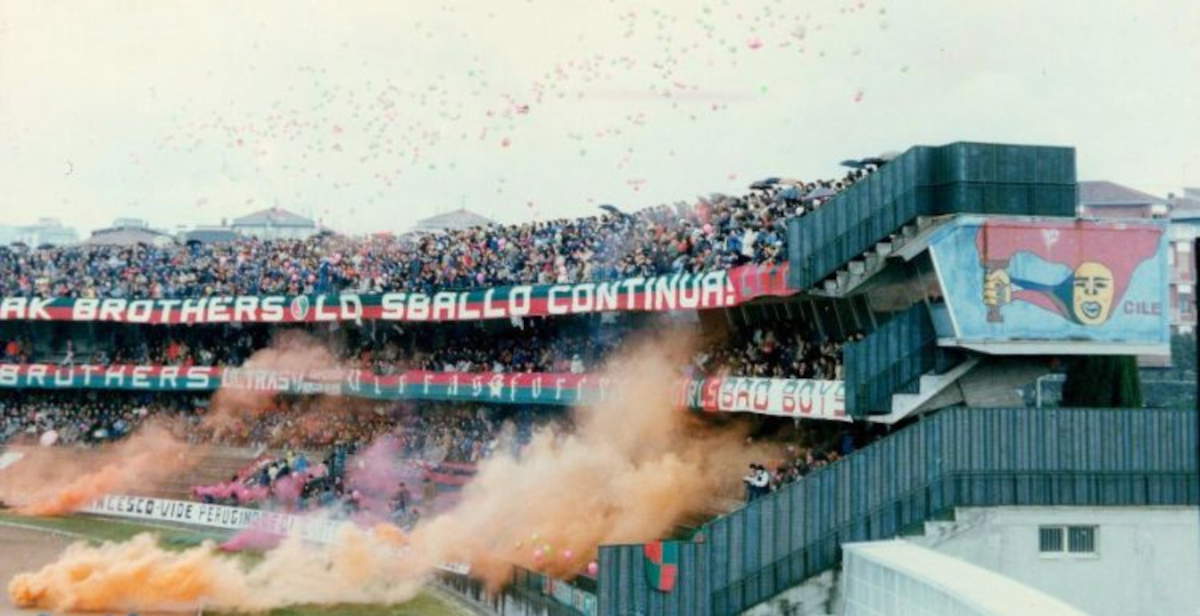The stadium in the city of Terni, built in 1969 and named after motorcyclist Libero Liberati, is at the center of a heated debate regarding its future and the preservation of some historically important masonry. Since 1975, the stadium’s interior walls have been home to murals created by young Chilean exiles from the Pablo Neruda Brigade, who came to Terni to escape the Pinochet regime. The works, which constitute a true historical and artistic heritage, bear witness to the struggle against the Chilean dictatorship and the values of solidarity and welcome that characterized the city’s hospitality to political refugees.
In recent months, the so-called Stadium-Clinic project, which involves thedemolition of the current structure andthe construction of a new stadium together with a health facility, has ignited a public and institutional debate. One of the main critical issues concerns precisely the fate of the murals: the project envisions their removal, with possible preservation and relocation in a square adjacent to the new stadium. The issue has mobilized cultural and sports associations, which have stressed the importance of preserving the integrity of the works and their symbolic, historical, and artistic value.
On Aug. 29, 2025, Arci Terni, Il Pettirosso Aps, Sentieri Partigiani, Anpi Terni, Cgil Terni, Asd Gramsci Terni and the groups of the East curve of the Liberati Stadium, Vecchio Stampo and Brigata Gagarin, sent an official report to the Soprintendenza Archeologia, Belle Arti e Paesaggio of Umbria, asking them to take action for the protection, recovery and proper preservation of the murals. “They are not mere wall decorations, but a legacy of the Chilean exiles [...], a living testimony of struggle against dictatorship, solidarity and welcome. Their loss or compromise would represent irreparable damage from a historical, artistic and civil point of view,” the associations emphasize in their communication.
The associations requested the Superintendency to formally verify the cultural interest of the murals and to take an active role in the removal, restoration and relocation operations, ensuring that they are placed in accessible and appropriate locations, without compromising their historical legibility. They also demanded that the process be fully documented, both historically and scientifically, so as to preserve the memory of the political and social events related to the creation of the works.

At the same time, a spontaneous committee called “Let’s Save the Liberati” was born, which formally requested the Municipality of Terni and Ternana Calcio to suspend any action to remove the murals present in the South and East corners. The committee justified the request with the need for certainty on the process of the Stadium-Clinica project, which, at the moment, has not yet seen the formal start of procedures for the construction of the new sports facility.
At the institutional level, the matter has landed in Parliament. On September 9, 2025, as part of the 19th Legislature, Congresswoman Elisabetta Piccolotti submitted aquestion for writtenanswer to the Minister of Culture and the Minister for Sports and Youth (House Act 4/05831, sitting No. 526). In the act, Piccolotti stresses the historical importance of the Pablo Neruda Brigade murals and urges the ministers to prepare all necessary initiatives so that their cultural value is officially recognized. The question also requests that the works not be removed until the construction of the new stadium is confirmed, and that any removal, conservation and relocation operations be entrusted exclusively to the Soprintendenza Archeologia, Belle Arti e Paesaggio of Umbria.
The affair thus reflects tensions between urban development and cultural heritage protection. The construction of a new stadium, deemed necessary by some parties for infrastructural and sporting reasons, is confronted with the need to protect a heritage of historical, artistic and civic significance. The outcomes of the issue will have implications not only for the Terni community, but also for the collective memory associated with Chilean exiles and the testimony of their struggle against the Pinochet regime.
The associations and the committee have repeatedly stressed that the value of the murals goes beyond mere aesthetic decoration: they represent a visual and social document of welcome and civic engagement, a piece of local history that bears witness to how an Italian city offered refuge to those fleeing political persecution. Their protection and enhancement, according to activists, cannot be subordinated exclusively to logics of infrastructural or commercial development. From the report to the Superintendency to the mobilization of the Salviamo il Liberati committee to the parliamentary question, a complex picture emerges in which the preservation of the murals becomes a central issue in the public debate. Although the Superintendency has not yet made a final pronouncement, it is called upon to ensure that any intervention does not compromise the integrity of the works, preserving their legibility and historical value, in line with the demands of the associations and Congresswoman Piccolotti.
 |
| Terni, future of historic murals at Liberati Stadium in doubt |
Warning: the translation into English of the original Italian article was created using automatic tools. We undertake to review all articles, but we do not guarantee the total absence of inaccuracies in the translation due to the program. You can find the original by clicking on the ITA button. If you find any mistake,please contact us.